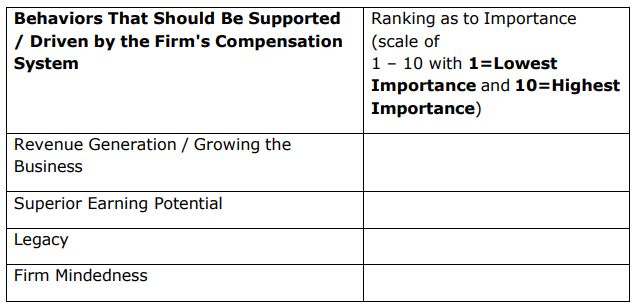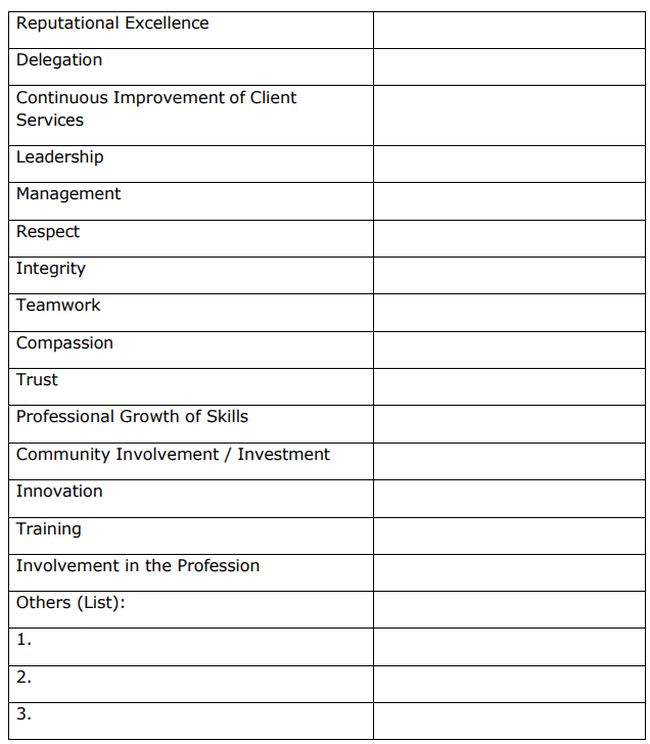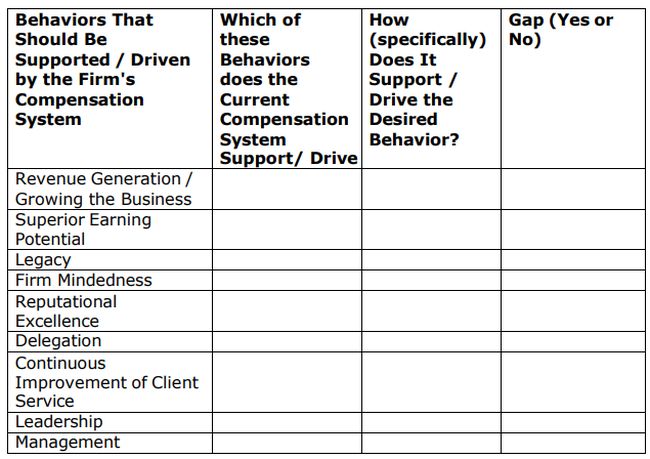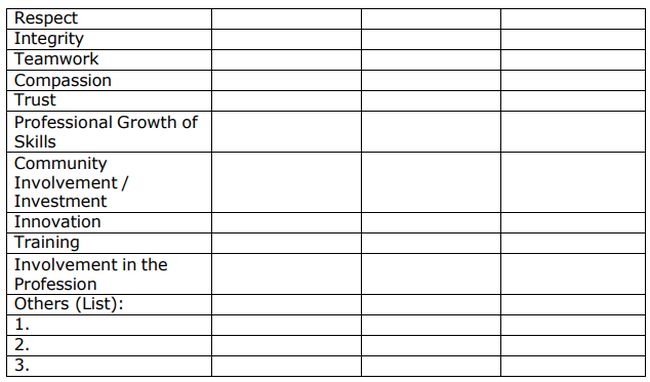Compensation schemes are a historically cyclable topic whose time has seemed to come around once again.
It has been my experience that when many law firms begin a review of their approach to partners' compensation, they start with a system/approach that theoretically seems to fit their needs/desires and then try and squeeze their firm into the system.
Such an approach works for some, but for many, it just redirects the frustration/challenge they were experiencing that made them want to review their compensation approach in the first place.
To enable partners to overcome these obstacles, we have developed a straightforward two‐step approach, labeled the "compensation gap analysis," for lack of creativity.
Step One ‐ Identify and prioritize the behaviors required to achieve your firm's strategic goals/directions.
Again, there is little rocket science in identifying the types of behavior that most plans require to have a chance of succeeding. The real challenge is achieving a weighted consensus as to their priority.
RANK DESIRED BEHAVIOURS


The above chart is not an exhaustive list but rather a typical list. Firms should customize their behaviors to align with their values and strategic direction for the most significant impact.
Step Two ‐ Complete the Compensation Gap Analysis
In this step, we take the behaviors identified in Step One and determine where, if any place, there is a gap between the desired behaviors and those driven by the current compensation system.
Firms should proceed with caution when approaching this part of the exercise. It is insufficient to say that the compensation system drives (rewards) the behavior. The partners must articulate how it drives (rewards) the desired behavior. Remember, if it is not transparent to the partners, the odds of it even having the desired result are minimized.
DETERMINE UNSUPPORTED DESIRED BEHAVIORS


The fourth column identifies the "No" answers from the second column and indicates the weighted priority the partners have assigned to that behavior from Step One.
If the behaviors in the fourth column are all "8s", "9s," or "10s," then while some tweaking may be in order, a wholesale change out of the system is not necessary.
However, suppose there are several "1s", "2s" and "3s" in this column. In that case, the likelihood of successfully achieving the firm's desired behaviors or strategic goals/direction is reduced without implementing wholesale changes to the firm's compensation system.
These gaps, combined with the notoriously poor track record of execution in many law firms, will increase the risk of failure to unacceptable levels. Remedial action by the firm's general leadership and the partners is imperative.
Remember, without a formal strategic plan, your compensation system is your strategic plan! Is it worth following?
Who is Stephen Mabey?
Who is Stephen Mabey? Stephen Mabey is a CPA, CA, and Applied Strategies, Inc.'s Managing Director. His credentials include the following:
- Fellow of the College of Law Practice Management (one of 19 Canadians);
- Author of Leading and Managing a Sustainable Law Firm: Tactics and Strategies for a Rapidly Changing Profession and Key Performance Indicators An Introductory Guide (Amazon);
- More than 25 years in a senior management role with Stewart McKelvey, a 220- lawyer, six-office Atlantic Canadian law firm;
- Over 14 years providing advice and counsel to small to mid-size law firms on a broad range of issues;
- A panelist and facilitator of the Managing Partner Information Exchange ("MPIE") at the annual Managing Partner Forum Leadership Conference held in Atlanta, Georgia, each May;
- A group mailing list that circulates articles, directly and indirectly, impacting law firms.
He has advised law firms on a wide range of law firm issues, including - strategic action planning, leadership, understudy (succession) planning, business development, capitalization of partnerships, partnership agreements, lawyer & staff engagement, marketing, key performance indicators, competitive intelligence, finance, mergers, practice transitioning, compensation arrangements, organizational structures, and partnership arrangements.
The content of this article is intended to provide a general guide to the subject matter. Specialist advice should be sought about your specific circumstances.